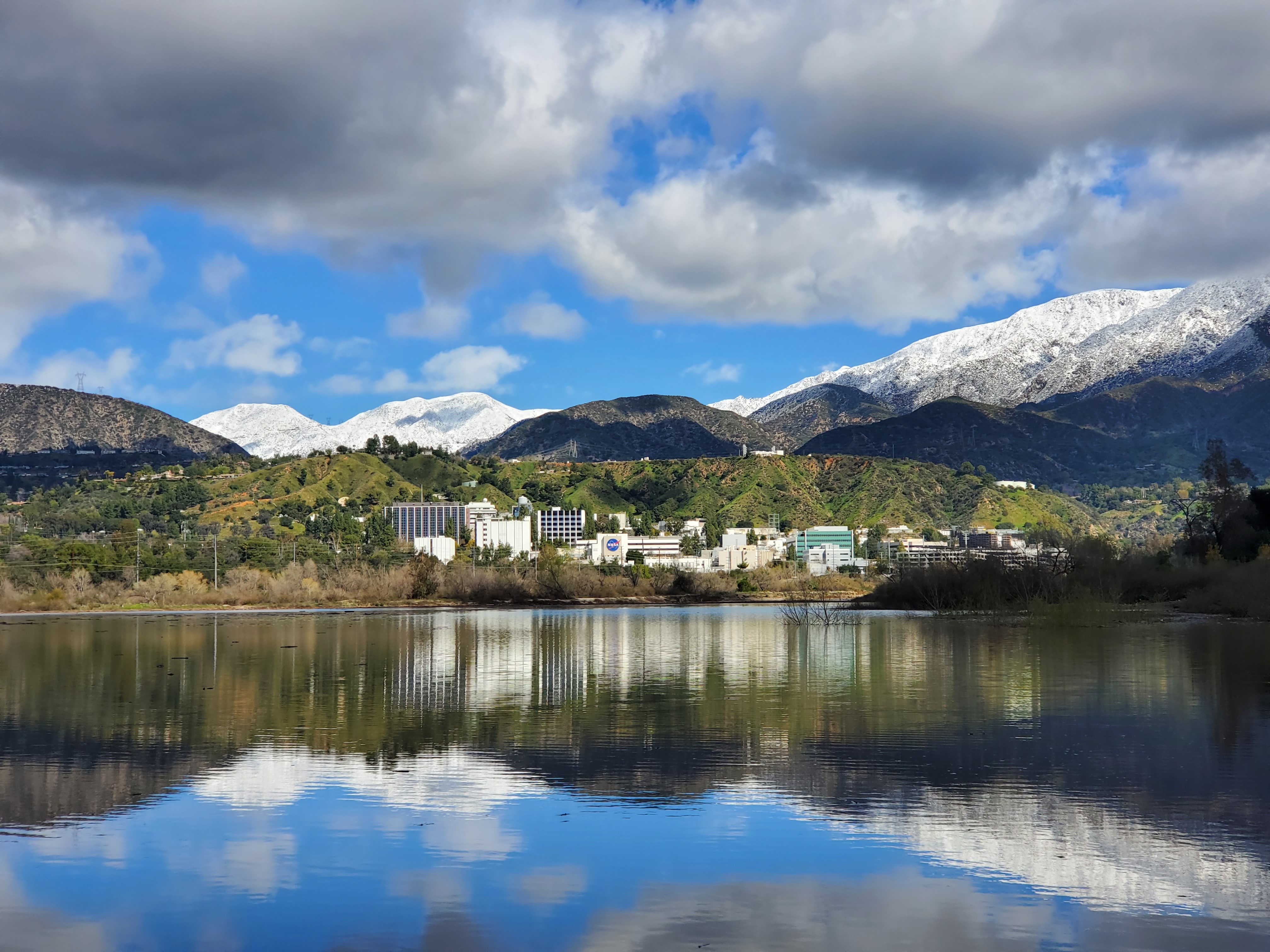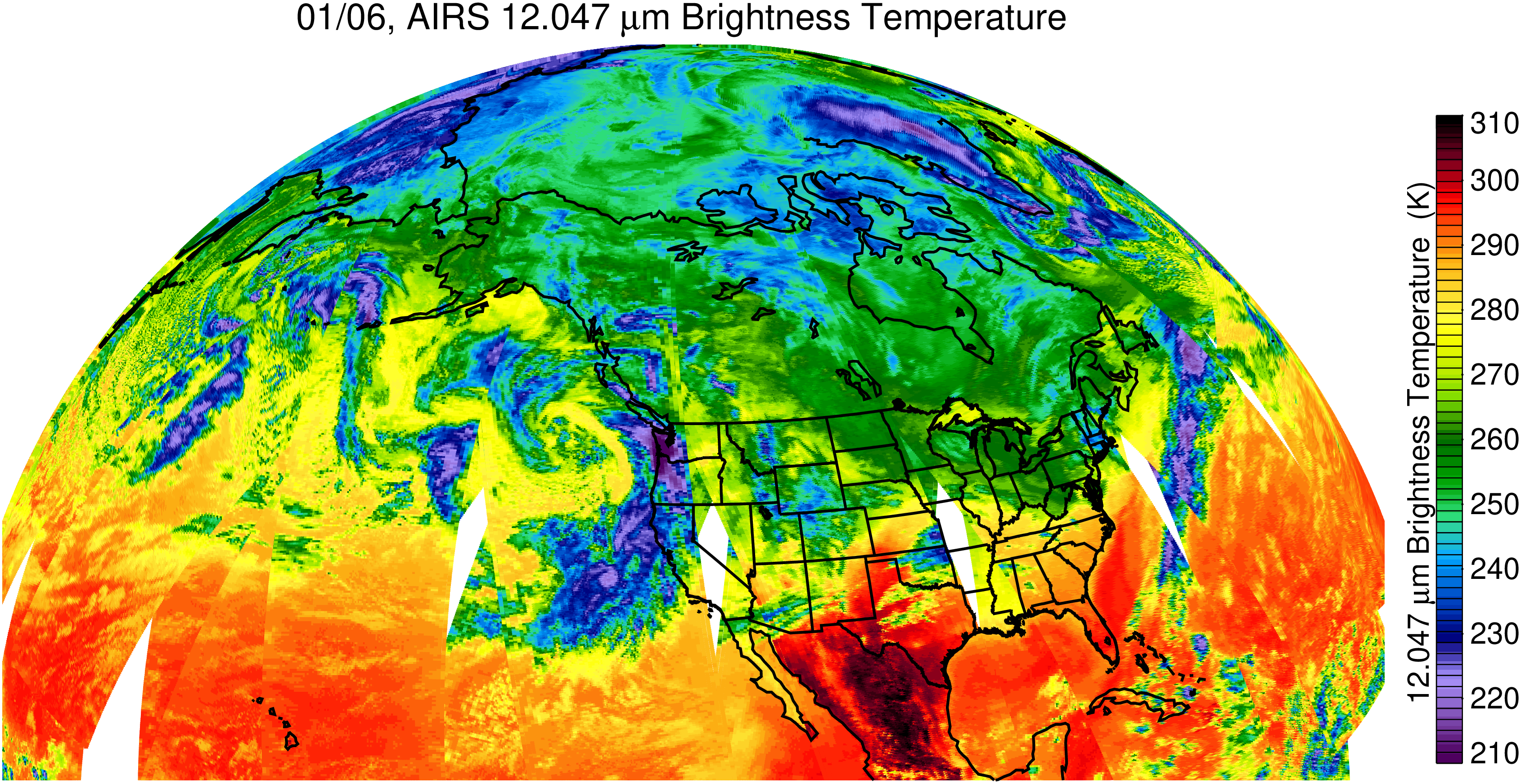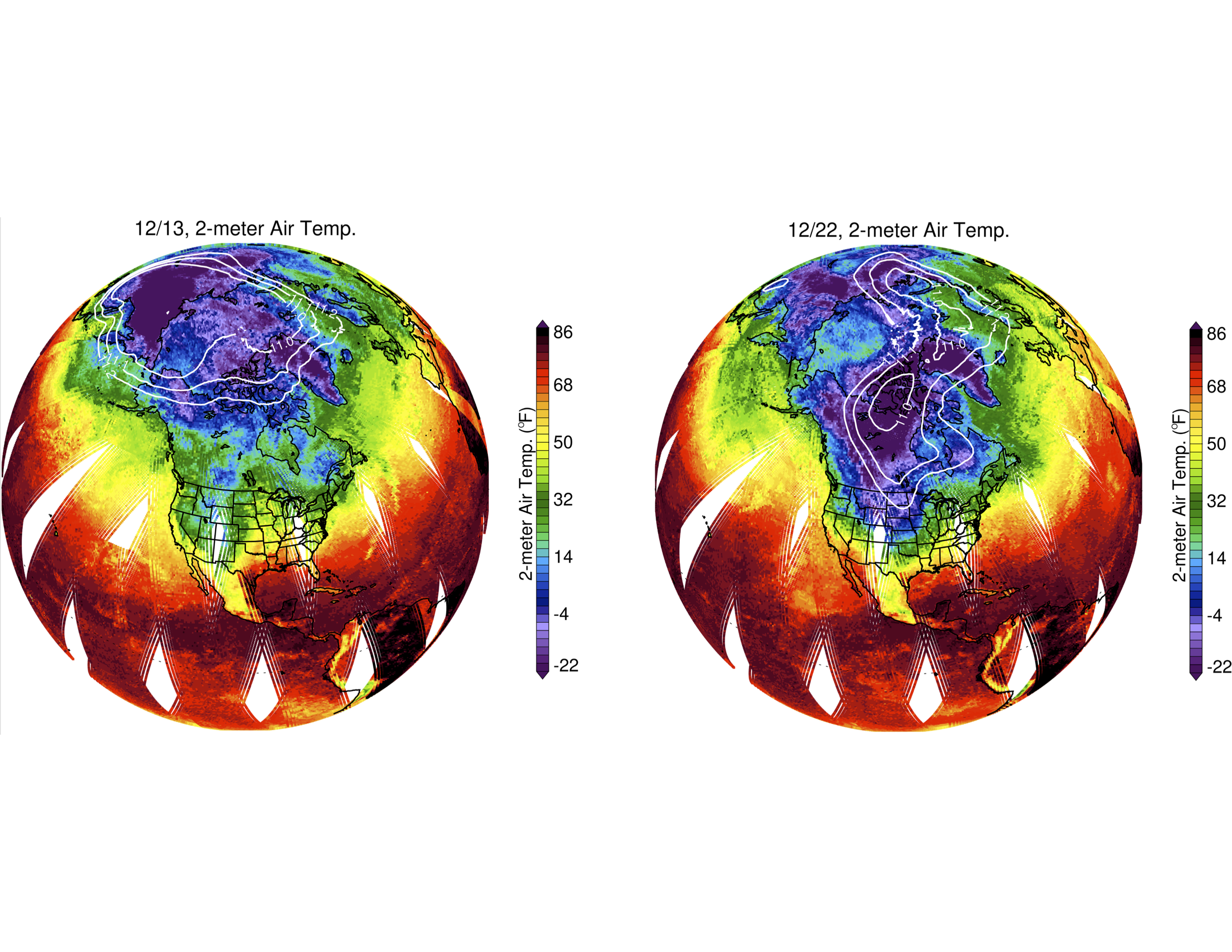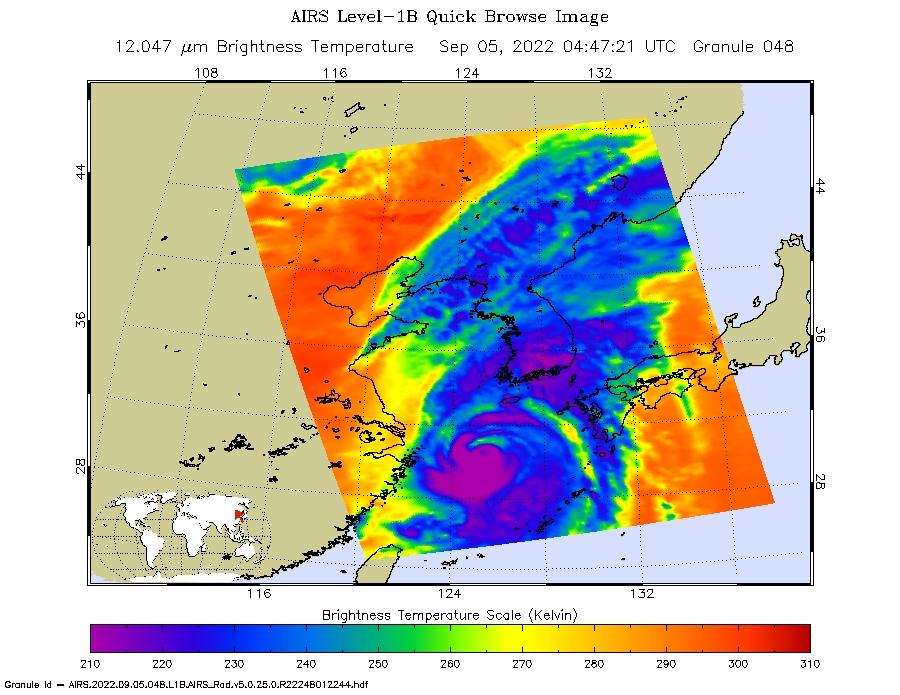News | March 2, 2023
February Cold in California as Captured by AIRS
Winter storms and cold weather have affected large parts of the United States in February, including unusually cold weather in California. NASA's AIRS instrument captured the evolving weather patterns and their larger context.
The animation above displays the near-surface air temperature over North America and its surroundings, over the time period 17-26th February, 2023. An area of cold air with low atmospheric pressure, known as the Arctic polar vortex, generally sits above the Arctic stratosphere as seen in the frame from February 17th. This whirling vortex (counter-clockwise flow) is usually strong and stable, keeping extremely cold air confined in the Arctic, making the polar jet stream in the troposphere shift northward. This polar jet stream separates the warmer mid-latitude air from the colder polar air. Occasionally, with the weakening of the polar vortex, the polar jet stream becomes wavy, which can easily lead to colder polar air being unleashed down into the mid-latitudes. This is exactly what happens as the movie progresses to 21-22th February – a tongue of cold Arctic air breaks out southward, stretching into the United States including the warmer southern California this time.
White contour lines overlaid on the maps show geopotential height, the altitude in kilometers, of the 200 hPa pressure surface. Situated above the tropopause, those contour lines (~ 11 km) encircle the polar vortex. In the maps, blue to purple colors represent air temperature below freezing point (0°C/32°F), and green colors show air temperature between 32-50°F (0-10°C). The animation clearly shows that this winter storm is associated with the weakened polar vortex breakdown, which unleashed exceptionally cold air intruding into the south, affecting a large part of the U.S. In particular, by 22th Feb we see the cold air (green and blue colors) has reached California, causing a major winter storm with unusually massive snow, as reported in multiple media sources.
In fact, this winter storm has caused several feet of snow in parts of the usually warmer Southern California starting Thursday Feb 22nd and continued through the weekend. Below is a picture by JPL scientist Baijun Tian, shot from the Devil’s Gate Reservoir in Pasadena on Feb 26th, with JPL in the front and the San Gabriel Mountains covered by snow in the back.

The AIRS instrument onboard NASA's Aqua satellite passes over the Earth from pole to pole covering most of the globe twice a day, making overpasses in a northward and southward track, resulting in measurements during daytime at roughly 1:30 pm and nighttime around 1:30 am, local time, over most areas. In the maps shown in the animation, both the daytime and nighttime measurements have been averaged for each day. The white spaces on the maps are the only areas that don't have measurements for a given day.
AIRS, in conjunction with the Advanced Microwave Sounding Unit (AMSU), senses emitted infrared and microwave radiation from Earth to provide a three-dimensional look at Earth's weather and climate. Working in tandem, the two instruments make simultaneous observations down to Earth's surface. With more than 2,000 channels sensing different regions of the atmosphere, the system creates a global, three-dimensional map of atmospheric temperature and humidity, cloud amounts and heights, greenhouse gas concentrations and many other atmospheric phenomena.
Launched into Earth orbit in 2002, the AIRS and AMSU instruments are managed by NASA's Jet Propulsion Laboratory in Pasadena, California, under contract to NASA. JPL is a division of the Caltech in Pasadena.






